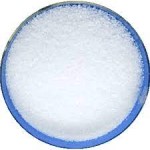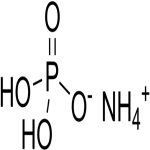CAS Number 7722-76-1, Monoammonium Phosphate or Ammonium Phosphate Monobasic or Ammonium Dihydrogen Phosphate Analytical Reagent FCC Food Grade Manufacturers Exporters







CAS Number 7722-76-1, Monoammonium Phosphate or Ammonium Phosphate Monobasic or Ammonium Dihydrogen Phosphate Manufacturer Exporter
For Properties Specifications of Monoammonium Phosphate or Ammonium Phosphate Monobasic Click Properties, Specifications of Monoammonium Phosphate or Ammonium Phosphate Monobasic Manufacturer.
For Uses of Monoammonium Phosphate or Ammonium Phosphate Monobasic Click Uses of Monoammonium Phosphate or Ammonium Phosphate Monobasic Manufacturer.
For For SDS MSDS Sheet of Monoammonium Phosphate or Ammonium Phosphate Monobasic Click SDS Safety Data Sheet MSDS Sheet of Monoammonium Phosphate or Ammonium Phosphate Monobasic Manufacturer.
The Properties and Specifications of Monoammonium Phosphate or Ammonium Phosphate Monobasic:
Ammonium Phosphate, Monobasic FCC Food Grade Specifications:
Ammonium Dihydrogen Phosphate; Monoammonium Phosphate
NH4H2PO4 Formula weight 115.03
INS: 342(i) CAS 7722-76-1
DESCRIPTION
Ammonium Phosphate, Monobasic, occurs as white crystals, a crystalline powder, or granules. It is freely soluble in water. The pH of a 1:100 aqueous solution is between 4.3 and 5.0.
Function: Buffer; dough conditioner; leavening agent; yeast food.
REQUIREMENTS
Identification: A 1:20 aqueous solution gives positive tests for Ammonium and for Phosphate.
Assay: Not less than 96.0% and not more than 102.0% of NH4H2PO4.
Arsenic: Not more than 3 mg/kg.
Fluoride: Not more than 10 mg/kg.
Lead: Not more than 4 mg/kg.
Ammonium Phosphate, Monobasic Analytical Reagent Grade Specifications:
Ammonium Dihydrogen Phosphate
NH4H2PO4 --- Formula Weight 115.03
CAS Number 7722-76-1
REQUIREMENTS
Assay: 98.0% NH4H2PO4
pH of a 5% solution: 3.8-4.4 at 25C.
MAXIMUM ALLOWABLE
Insoluble matter: 0.005%
Ammonium hydroxide precipitate: 0.005%
Chloride (Cl): 5 ppm
Nitrate (NO3): 0.001%
Sulfate (SO4): 0.01%
Heavy metals (as Pb): 5 ppm
Iron (Fe): 0.001%
Potassium (K): 0.005%
Sodium (Na): 0.005%
The Uses of Monoammonium Phosphate or Ammonium Phosphate Monobasic or Ammonium Dihydrogen Phosphate:
MAP or Monoammonium Phosphate or Ammonium Phosphate Monobasic or Ammonium Dihydrogen Phosphate is used in dry chemical fire extinguishers commonly found in offices, schools and homes. It is a water-soluble fertilizer with high Phosphate content along with the optimum amount of Nitrogen. Monoammonium Phosphate (Food Grade) is used in food as a pH control agent, buffering agent, acidulate, and nutrient source.
The MSDS-SDS Hazard Statement of Monoammonium Phosphate or Ammonium Phosphate Monobasic or Ammonium Dihydrogen Phosphate:
Monoammonium Phosphate or Ammonium Phosphate Monobasic
SDS, Safety Data Sheet
MSDS Sheet, Material Safety Data Sheet 03-Dec-22
1. Product Identification
Product Name & Other Names: Monoammonium phosphate or Primary ammonium phosphate or ammonium dihydrogen phosphate or ammonium biphosphate or phosphoric acid monoammonium salt, Monobasic Ammonium Phosphate or Ammonium Phosphate Monobasic or Mono ammonium phosphate.
CAS No.: 7722-76-1
EINECS EC Number: 231-764-5
Molecular Weight: 115.04
Chemical Formula: NH4H2PO4
Relevant uses and uses advised against (if any): Industrial Manufacturing.
2. Hazards Identification
GHS, Globally Harmonized System Classification in accordance with 29 CFR 1910
Classification according to Regulation (EC) No 1272/2008
Not a hazardous substance or mixture according to Regulation (EC) No. 1272/2008.
This substance is not classified as dangerous according to Directive 67/548/EEC.
Labeling according GHS & Regulation (EC) No 1272/2008
GHS Label Elements NONE |
Signal Word: None
Precautionary statements:
P261: Avoid breathing dust/fume/gas/mist/vapors/spray.
P262: Do not get in eyes, on skin, or on clothing.
P281: Use personal protective equipment as required.
P302+P352 - IF ON SKIN: Wash with plenty of soap and water.
P304 + P340 - IF INHALED: Remove victim to fresh air and keep at rest in a position comfortable for breathing.
P305 + P351 + P338 - IF IN EYES: Rinse cautiously with water for several minutes. Remove contact lenses, if present and easy to do. Continue rinsing.
P337+313: If eye irritation persists get medical advice/attention.
3. Composition/Information on Ingredients
Product Name & Other Names: Monoammonium phosphate or Primary ammonium phosphate or ammonium dihydrogen phosphate or ammonium biphosphate or phosphoric acid monoammonium salt, Monobasic Ammonium Phosphate or Ammonium Phosphate Monobasic or Mono ammonium phosphate.
CAS No.: 7722-76-1
EINECS EC Number: 231-764-5
4. First Aid Measures
Always seek medical attention after first aid measures are provided.
Inhalation: Remove to fresh air. If not breathing, give artificial respiration. If breathing is difficult, give oxygen. Get medical attention.
Ingestion: Induce vomiting as directed by medical personnel. Never give anything by mouth to an unconscious person. Get medical attention.
Skin Contact: Immediately flush skin with plenty of water for at least 15 minutes. Remove contaminated clothing and shoes. Get medical attention. Wash clothing before reuse. Thoroughly clean shoes before reuse.
Eye Contact: Immediately flush eyes with plenty of water for at least 15 minutes, lifting upper and lower eyelids occasionally. Get medical attention.
5. Fire Fighting Measures
Fire: Not considered to be a fire hazard. Fire may produce toxic fumes.
Fire Extinguishing Media: Use water spray, alcohol-resistant foam, dry chemical or carbon dioxide.
Special hazards arising from the substance or mixture: nitrogen oxides (NOx), oxides of phosphorus
Special Information: In the event of a fire, wear full protective clothing and NIOSH-approved self-contained breathing apparatus with full face piece operated in the pressure demand or other positive pressure mode. At high temperatures under fire conditions, it may produce toxic or irritating fumes. Fire-extinguishing work is done from the windward and the suitable fire-extinguishing method according to the surrounding situation is used.
6. Accidental Release Measures
Personal precautions, protective equipment, and emergency procedures: Avoid breathing dust/fumes/gas/mist/vapors/spray. Use individual protective equipment (waterproof boots, suitable protective clothing, safety glasses, etc.). Do not approach facing the wind.
Environmental precautions: Do not let the product enter drains, soil, or water sources.
Methods and materials used for containment Cleanup procedures and Storage: Contain spilled material. Do not let the product enter drains. Use a shovel to put the material into a convenient waste disposal container.
7. Handling and Storage
Precautions for safe handling: Apply according to good manufacturing and industrial hygiene practices. Ensure proper ventilation. In case of insufficient ventilation, wear suitable respiratory equipment. Wash thoroughly after handling. Do not drink, eat, or smoke while handling. Avoid contact with skin, eyes, and clothing. Minimize dust generation. Avoid breathing dust/fumes/gas/mist/vapors/spray. Keep container tightly closed. Avoid ingestion and inhalation. Use individual protective equipment (waterproof boots, suitable protective clothing, safety glasses, etc.).
Conditions for safe storage, including any incompatibilities: Store in cool, dry, and ventilated area away from heat sources and protected from sunlight in tightly closed original container. Keep air contact to a minimum. Store protected from heat, sparks and ignition sources and incompatible materials. Avoid contact with skin and eyes. Avoid inhalation of dust/mist/vapor. Do not store with incompatible materials like strong oxidizing agents, strong acids, sodium hypochlorite.
8. Exposure Controls/Personal Protection
Airborne Exposure Limits: None established for Mono Ammonium Phosphate.
Ventilation System: In general, dilution ventilation is a satisfactory health hazard control for Monoammonium Phosphate. However, if conditions of use create discomfort to the worker, a local exhaust system should be considered.
Personal Respirators (NIOSH Approved): For conditions of use where exposure to dust or mist is apparent and engineering controls are not feasible, a particulate respirator (NIOSH type N95 or better filters) may be worn.
Skin Protection: Wear impervious protective clothing, including boots, gloves, lab coat, apron or coveralls, as appropriate, to prevent skin contact.
Eye Protection: Use chemical safety goggles and/or full face shield where dusting or splashing of solutions is possible. Maintain eye wash fountain and quick-drench facilities in work area.
Other Control Measures: Maintain good housekeeping in work area. Handle in accordance with good industrial hygiene and safety practice.
9. Physical and Chemical Properties
Appearance: Brilliant white crystals or granules.
Odor: Faint acid odor.
Odor threshold: Not available.
pH: around 4.2
Relative density: around 1.8
Melting Point: 190C (374F)
Initial boiling point and boiling range: Not available.
Flash point: Not available.
Auto-ignition temperature: Not available.
Decomposition temperature: Not available.
Upper/lower flammability or explosive limits: Not available.
Vapor pressure: Not available.
Vapor density: Not available.
Evaporation rate: Not available.
Flammability (solid, gas): Not available.
Partition coefficient: n-octanol/water: Not available.
Solubility: Soluble 1 g/2.5 ml water.
Viscosity: Not available.
10. Stability and Reactivity
Stability: Stable under ordinary conditions of use and storage.
Hazardous Decomposition Products: Burning may produce ammonia and oxides of phosphorus.
Hazardous Polymerization: Will not occur.
Incompatibilities: Strong oxidizing agents, Strong acids, Sodium hypochlorite.
Conditions to Avoid: Incompatibles.
11. Toxicological Information
Acute toxicity
LD50 Oral - rat - male and female - > 2.000 mg/kg
LD50 Dermal - rat - male and female - > 5.000 mg/kg
Carcinogenicity: No component of this product present at levels greater than or equal to 0.1% is identified as possible or confirmed human carcinogen by IARC, ACGIH, OSHA and NTP.
Mutagenic Effects: Not available.
Developmental Toxicity: Not available.
Reproductive Effects: No information available.
12. Ecological Information
Toxicity to fish: static test LC50 - Oncorhynchus mykiss (rainbow trout) - > 85,9 mg/l - 96 h
Persistence and Degradability: No information available.
Mobility: No information available.
Bioaccumulation/ Accumulation: No information available.
Results of PBT and vPvB assessment: No data available for assessment.
13. Disposal Considerations
Whatever cannot be saved for recovery or recycling should be managed in an appropriate and approved waste disposal facility.
14. Transport Information
DOT USA, TDG Canada & ADR/RID Europe: Not Controlled.
IATA/ICAO & IMDG/IMO: Not Controlled.
15. Regulatory Information
USA:
SARA 311/312: See section 2.
DISCLAIMER: The information and recommendations set forth herein are presented in good faith and believed correct as of the date hereof. It is compiled from various sources and it is not necessarily all inclusive nor fully adequate in every circumstance. In addition, these suggestions should not be confused with nor followed in violation of applicable laws, regulations, rules or insurance requirements applicable. This SDS sheet is intended only as a guide to the appropriate precautionary handling of the material by a properly trained person using this product. Individuals receiving the information must exercise their independent judgment in determining its appropriateness for a particular purpose.
Anmol Chemicals & Pharmaceuticals Pvt. Ltd. is an off-shoot of Anmol Chemicals Taloja. It is located in MIDC Taloja and it is manufacturing pharmaceutical grades of API, Excepients, Food grade and Reagent grade chemicals. Anmol Chemicals & Pharmaceuticals Pvt. Ltd. is a several decades old group of companies, engaged in manufacturing, supplying, distributing, wholesale supplies for actual users, retail or small pack supplies for research and development chemicals, fine and speciality chemicals, pharmaceutical excipients, mineral fortifiers in chemically pure, Analytical reagent grade, IP BP USP Ph Eur EP JP and other pharmaceutical grade monograph including FCC Food grade chemicals and Nutraceuticals, Mineral Fortifiers at best prices.

Monoammonium Phosphate or Ammonium Phosphate Monobasic Structure
CAS Number 7722-76-1, Monoammonium Phosphate or Ammonium Phosphate Monobasic Manufacturer Exporter
ANMOL CHEMICALS & PHARMACEUTICALS Pvt. Ltd.
India, USA, Europe, UAE
TELEPHONE: +912223770100
Navi Mumbai, INDIA
e-mail: info(At the rate i.e. @)anmol.org
Copyright. 23-nov-24
We manufacture:
Glacial Acetic Acid Manufacturer
Aluminum Chloride Hexahydrate Anhydrous
Aluminum Chlorohydrate Solution Powder
Dihydroxyaluminum Aminoacetate
Dihydroxyaluminum Sodium Carbonate
Esmolol Hydrochloride or Esmolol HCl
Ammonia Solution Concentrated or Ammonium Hydroxide Solution

